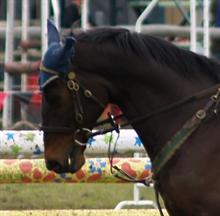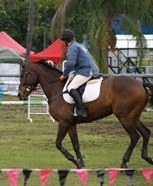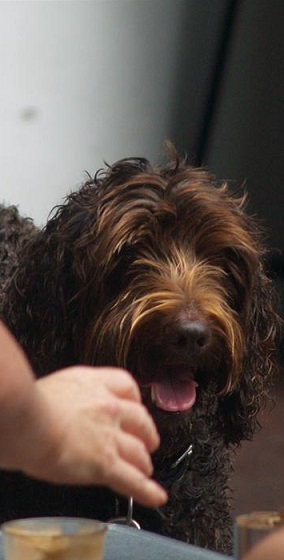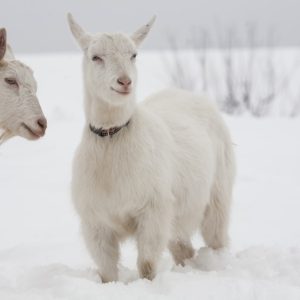Learn to Groom All Types of Animals.
 Animal groomers are in high demand, and this is only likely to increase.
Animal groomers are in high demand, and this is only likely to increase.
- Students studying this course will gain a solid foundation of knowledge in animal grooming – for a variety of applications, practical and aesthetic, including cleanliness and health, and showing animals.
- Animals covered in the course include dogs, cats, cattle, horses, poultry, rabbits, captive wildlife.
Develop a fundamental understanding of animal grooming.
Learn the hows and whys of animal grooming.
We Groom animals for many different reasons:
- Cleanliness and Health – For both the animals and the owners.
- To Make them Look Better – Fur is trimmed, washed and even coloured, perhaps plaited and ribbons added, for animals to be presented in a competition.
- Practical Reasons e.g. Poodles were originally trimmed to allow them to swim without wet fur dragging them down, but leaving balls of fur around joints.

- Safety – Bird beaks might have sharp tips removed to stop them injuring other birds.
- Conservation – Deer may have horns removed to discourage poachers.
COURSE STRUCTURE AND CONTENT
Course Duration: 100 hours.
Start Date: Start at any time – study at a pace that suits you, and with full tutor support for the duration of your studies.
Lessons: The Animal Grooming course comprises 10 lessons as outlined, below.
 Lesson 1. Scope and Nature of Grooming
Lesson 1. Scope and Nature of Grooming
Introduction to grooming behaviour, Why do humans groom animals? What animals are groomed? Generic grooming tasks, Common tools and equipment, Combs, brushes, rakes, blades and other equipment, Confidently handling animals, The industry and workplace opportunities, Workplace skills, Accessing the right information online.
Lesson 2. Animal Biology
Skin – Epidermis & Dermis, Claws, Nails and Spurs, Hair, Horns, Hooves, Physiological control – Homeostasis, Thermoregulation.
Lesson 3. Caring for the Skin and Coat
Animal nutrition, General nutrition, Micronutrition, Water requirements, Common skin problems in dogs and cats, Ringworm – fungal infection, Flea and flea control, Ticks and tick control, Lice and control, Mites (mange) and control, Treating skin problems in dogs and cats, Common skin problems in equines, Caring for the coat – brushing, bathing, blowdrying, dematting, clipping, trimming, Removing burrs from fur, Caring for cats – combing, brushing and bathing.
Lesson 4. Specialised Grooming Tasks
Risks of working with animals, Selecting a suitable grooming location, Understanding animal psychology and behaviour, The flight or fight response, Environmental Influence on behaviour in zoo animals.
Lesson 5. Handling Animals
General considerations when handling animals, Pre-restraint techniques, Physical restraint, Medical restraint – sedation, Safely handling different animals when grooming: dogs, cats, cattle, poultry, rabbits, captive wildlife, Handling Horses: Safe and Respectful, Catching, releasing, leading, tying up and working around the horse, Indicators of pain, mild fear and extreme fear, Transporting horses.
Lesson 6. Grooming Dogs
Communication in dogs, Use of scent, Barking and body language, Grooming different types of dogs, Long Coat types, short coat types, single coat types, Double coat types, Smooth coat types, Wire haired coat types, Woolly or wavy coat types, Corded coat types, Bald or hairless coat types, Brushing and bathing care, Clipping and styling, Grooming procedures that can go wrong, Cutting toenails too short, Cuts or nicks when clipping, Overheating, Water trapped in the ear canal.
Lesson 7. Grooming Exotic Animals
Grooming birds, Handling birds, Beaks, Feathers, Bathing birds, Grooming rabbits, Handling, moulting, Transporting, Grooming captive wildlife, Bathing small and large mammals, Handling large animals and exotics, Dangerous animals, Fear of humans, Issues with handling animals, Psychological effects of different handling techniques, Grooming areas
Lesson 8. Safety in the Grooming Workplace
Safety for people and staff – workplace health and safety, First aid, Legislation and duty of care, Safety of animal owners and visitors to the premises, Protective equipment, A groomer’s personal protection, Equipment and workplace safety, Storage and disposal of chemicals, Handling Tools and Machinery, Safety with tools and equipment, Safety audit, Example of an audit checklist, Safety for animals and people, Transportation, Safety of the animal at the salon, Electrical safety – at home and the groomers, Slip risk – wet surfaces, Cat and dog allergies.
Lesson 9. Preparing for Showing
What is animal showing? Why do people show pets? Showing dogs, Training your show puppy, Preparing for show – dogs, Days and evening before the show, The day of the show and in the ring, Showing – dress to impress, Showing poultry, Getting started – selecting your breed and buying your birds, Preparing birds for show, The day before the show, The day of the show, Showing cattle, Preparing cattle for show, In the show ring on the day.
Lesson 10. The Business of Grooming Planning a new grooming business
The business plan, Financial planning, Long term goals, Medium term goals, Annual financial plan, Financial records, Commonly used finance related terminology, Cash flow, Make the business a success – know your market, Insurance and risks – risk analysis and managing risk, Groomers insurance.
HOW THE COURSE WORKS
You can start the Animal Grooming course at any time.
It is studied by distance learning, so you can study in the comfort of your own home. But this doesn’t mean you are all alone in your studies. Our highly qualified and friendly tutors are there to help you every step of the way. If you have any questions at all, they are always happy to help.
Each lesson includes set tasks, and is completed with an assignment which the student submits to their course tutor. The tutor will mark the assignment and return this to the student with comments and suggestions for further reading.





